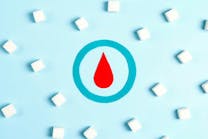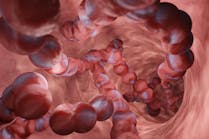COO Randy Rasmussen: “BioFire provides innovative, highly integrated, molecular systems.”
Randy Rasmussen
President and COO
Professional
In 1990, co-founded BioFire Diagnostics with Kirk Ririe and Carl Wittwer; prior experience included the Cardiology Dept. at the University of Utah; and CPEC, a company that tested and later licensed candidate drugs for treating heart failure
Education
PhD and BS from the University of Utah
Personal
I escape into the beautiful Wasatch Mountains that surround Salt Lake City as often as I can. In winter I enjoy backcountry skiing; in summer mountain biking. I also enjoy city life: Utah Opera, Utah Shakespeare Festival, and Sundance Film Festival.
BioFire's expertise centers on building innovative, highly integrated, molecular systems that anyone can use. Sample-to-answer platforms like the FilmArray require very tight integration of biochemistry, instrumentation, and software. Many companies struggle to get biochemists, engineers, and programmers to work together well. I think the fact that the three founders of the company span these areas of expertise, and work well together, communicates to the company that we want good cooperation. We have very little tolerance for finger pointing; we expect people to work together to solve problems.
FilmArray automatically does world-class sample prep, an incredibly high level of PCR multiplexing, and high-resolution DNA melting analysis. This is very sophisticated stuff, but we have engineered a system that lets a nine-year-old do it. I mean that literally; one of our scientists has used his nine-year-old son to run FilmArray demos while he speaks. That gets people's attention.
The company's newest and fastest growing products are easy-to-use, highly multiplexed panels for diagnosis of infectious disease close-to-the-patient. The FilmArray platform currently runs a respiratory pathogen panel (17 viruses, three bacteria). Hospital labs are able to instantly add a wide panel of molecular tests to their menu. With FilmArray, lab directors can provide physicians with an answer in just over an hour. Many hospitals are taking swabs from patients as they walk in the emergency room door. They wait for the result before they decide if they should admit patients, send them home with a prescription, or send them home with the assurance that it's just rhinovirus and they will be fine. We are working to extend the system by adding other panels that test for pathogens that cause sepsis, diarrhea, meningitis, and pneumonia.
Products and solutions have evolved to meet changing needs of our customers. At first, we were a box-oriented instrument company. Developing scientific instruments is fun, but your customers have to figure out how to use your instrument in a way that solves a problem. I spent a lot of time talking with customers about this in the early days. That really pushed me toward wanting to offer them more complete solutions. We needed to combine instrumentation, chemistry, and software in a way that gave a simple answer.
If you want to do molecular diagnostics, you have to extract nucleic acid from a human sample, you have to amplify the target, and you have to determine if the test is positive or negative. All of these steps pose significant challenges. The closer your product gets to providing good solutions for each step, the more appealing you will be to your users.
Features of the FilmArray Respiratory Panel multiplex PCR test. FilmArray panels are highly multiplexed, are easy-to-use, and give fast results. All these factors are important in FilmArray's success. We are offering the hospital lab the opportunity to materially improve patient care in the hospital for a whole class of patients. Labs can give quick and comprehensive answers physicians can use to improve treatment.
If you take the respiratory panel as an example, it is quite easy for a physician to diagnose a respiratory infection: fever, cough, runny nose. Guessing the underlying cause, however, is difficult. Many different organisms can cause those same symptoms. If the cause is bacterial, the patient needs an antibiotic; if it is flu, the patient could benefit from an antiviral agent. If it is the rhinovirus, then antibiotics won't help, and unneeded antibiotic use can cause future infections due to the drug wiping out the patient's normal flora.
Right now, most respiratory disease testing is done by sending samples out to reference labs and requesting tests for agents X, Y, and Z. This has multiple problems. It's slow: you won't know the results for days, making treatment less effective. You might guess the wrong organisms: X, Y, and Z are all negative, but the patient is clearly sick. Even if one of these tests is positive, many patients have multiple infections, flu plus RSV or adenovirus plus C. pneumo. You will miss these multiple infections because you stop testing when you get a positive result.
With FilmArray, hospital labs keep the testing (and the revenue) in-house. Starting a FilmArray run is faster and easier than packaging a sample for sendout. Patient care is improved.
New products are on the horizon. Our focus is on the FilmArray system right now, with our primary effort devoted to expanding the menu of panels. The BCID (blood culture identification) panel is next. It tests for 25 pathogens that cause sepsis as well as four drug resistance markers. We expect it to be on sale this year. After BCID, look for a GI panel testing for almost 30 pathogens that cause diarrhea. After that, we will be working on panels for meningitis and pneumonia.
BioFire has just been awarded a contract to provide diagnostic sytems to the U.S. military. Working with the Department of Defense, we provide the U.S. military with systems that test for the highest risk bio-threat agents. We were recently awarded a contract to provide FilmArray systems for bio-threat agent identification as well as routine diagnostics. The military is interested in FDA-cleared systems that can be used for both routine diagnosis of common pathogens and detection of bio-threat agents, which are a constant (albeit low probability) threat in modern warfare.
I think it is clear that the most likely place that bio-threat agents will be detected is the clinic, when an infected soldier comes in. Using the same system to detect respiratory and GI pathogens that they use to detect bio-threat agents is ideal. The system is up and running all the time detecting common things, but available to detect uncommon things when needed.
We have really enjoyed working with the military. We have provided all branches of the military bio-threat detection capability for the last 10 years.






